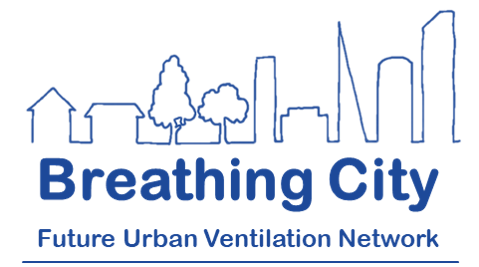On 5th December 2023 UKHSA held the 2023 UKHSA Air Quality and Public Health Research Review Meeting in the city of Manchester. The meeting was well attended by researchers, policy makers, industry partners and civic sector groups who work across health, social and building science disciplines.
During the 2023 UKHSA Air Quality and Public Health Research Review Meeting we heard talks in three sessions: Indoor Air Pollution and Health, Exposure to Air Pollution, Air Pollution, health and interventions.
Indoor Air Pollution and Health
Navigating the Unknown – Challenges in Managing Mould Growth in Buildings
Dr Hector Altamirano
In this keynote address Dr Altamirano took a look back in history to see if mould growth in buildings and its impact on health is a recently identified problem. It turns out, perhaps not unexpectedly, that mould growth has been identified as a cause of asthma and other respiratory related diseases since the early 20th Century gaining momentum as an indoor environmental hazard linked to damp buildings at the beginning of the 1970’s. It is now recognised that damp and/or mould in residential buildings is not only a problem in the UK, but worldwide.
Mould isn’t all bad though, in fact, moulds are essential organisms, which not only have an important role in breaking down organic matter, but also providing life saving antibiotics. As with all things, there is a balance that needs to be struck, and when it comes to buildings the take home message is that it is best to prevent mould growth in the first instance as eradication can be tricky. Dr Altamirano recommended 4 key points to prevent mould from growing indoors:
- Stop water from entering
- Reduce extra moisture
- Proper heating (including improvement of the building envelope)
- Efficient and consistent ventilation.
Whilst sounding simple enough on the surface significant challenges remain such as 1. Understanding how human behaviour effects moisture levels in dwellings 2. Ensuring houses are properly ventilated and heated (and their occupants understand how these work) and 3. A better understanding of how materials effect building performance both now and in the future.
Dr Altamirano ended by highlighting the potential effects of climate change, including increases in temperature, humidity and extreme events and how these will most likely lead to an increase in damp and mould issues within the UK, and further afield. All is not lost though as The UK Centre for Moisture in Buildings is actively working together with partners from academia, government, industry and the public to substantially improve the way moisture risk is understood and managed in the UK.
The burden of respiratory disease from formaldehyde, damp and mould in English housing
Dr Sierra N. Clark
Dr Clark described her work establishing the burden of respiratory disease stemming from formaldehyde, damp and mould in English housing (in 2019) which was undertaken due to currently regulatory and public attention on these two public health risks. Available literature was used to estimate exposures and epidemiological exposure-response relationships to calculate a population attributable fraction. This could then be used with total disease incidence/mortality and health burden (calculated using disability adjusted life years lost (DALY) scores) to give an exposure attributable incidence of disease/mortality/health burden. Key findings included that formaldehyde exposure caused ~800 DALYs lost among children due to asthma, whereas damp and mould were responsible for 2,800 DALYs lost among children and adults due to asthma and lower respiratory tract infections, and 1-2% of new cases of allergic rhinitis.
Data have been published and the findings have led to the development of new guidance on ‘Understanding and addressing the health risks of damp and mould in the home’. (link to guidance and publication).
Assessing Fungal Spore Health Impacts with Real-time Detection Technologies
Ian Crawford
Airborne fungal spores represent a significant health risk with an estimated 1.5 million global deaths annually due to invasive fungal disease predominately affecting cancer patients, the elderly, ICU patients and the immunocompromised. In addition, airborne fungal spores are known to exacerbate and sensitize asthma sufferers. However assessing the health impacts of airborne fungal spores is challenging as air sampling technologies often do not provide the specificity and temporal resolution needed, different samplers often provide conflicting data (potentially due to different laboratory analysis techniques, detection limits as well as sampler design) and it is difficult to compare studies as international standards are not prescriptive.
Dr Crawford presented his work on a real-time detection method using ultraviolet-light induced fluorescence to detect and speciate airborne fungal spores. Although data is still being analysed the sampling methodology shows considerable promise, being able to detect clear diurnal release behaviours of different spores and the impact of human activity (footfall) on spikes in spore emissions. It will be interesting to see how this work develops and what implications this sampling methodology could have to our understanding of the health effects of species of airborne fungal spores.
Exposure to Air Pollution
Towards developing an indoor air pollution emission inventory for the UK: Challenges and future directions
Dr Zaheer Ahmad Nasar
Dr Ahmad Nasar presented his work to develop and Indoor Pollutant Inventory as part of the Indoor Air Quality Emissions and Modelling System project (funded by the Met office and UKRI through the SPF clean air programme) which ‘aims to develop software and data tools to advance the UKs capacity for indoor air quality modelling, for the estimation of emissions and exposure’. There is a recognised need to better understand the air quality inside our buildings and the health effects of indoor air pollution. The objectives of the Indoor Pollutant Inventory are to:
- Synthesise the state of the air on indoor air pollution measurements in the UK
- Create an online inventory database for indoor air pollutants
- Develop a toolkit for the visualisation of characteristics indoor air pollutant emissions for a range of indoor environments.
An InAPI tool was developed which allowed the visualisation of a broad range of indoor air pollutants (Including gaseous pollutants, particulates, biological aerosols, and volatile organic compounds) and average emission rates representative of human activities in different environments including residential, occupational, recreational and transport settings.
Air Pollution, Health and Interventions
Born in Bradford’s City Collaboratory approach to reducing pollution
Professor Rosie McEachan
Professor Rose McEachan introduced ‘Born in Bradford’ – an internationally recognised research programme which focuses on finding out what makes families healthy and happy by tracking the lives of over 60,000 Bradfordians. Profesor McEachan described work to implement a clean air zone in Bradford resulting from historically previously documented high levels of air pollution which have been linked to negative effects on respiratory health, increased healthcare attendance and an associated economic cost. A feasibility study was carried out in 2018, which led to an outline and then full business case being submitted in 2020; implementation was then carried out in 2022. Data presented shows that average monthly nitrogen dioxide has decreased since the implementation of the clean air zone, but that public opinion is still divided, with limited trust in the motivations of politicians.
Gestational Particulate Matter (PM2.5) exposure and the risk of pre-term birth: A systematic review and meta analysis
Mr Shawn Lee
There are a large number of studies which have investigated how gestational air pollution exposure affects the risk of pre-term birth, but there are mixed findings from systematic reviews about the presence, direction, or magnitude of the association. As a result the Committee on the Medical Effects of Air Pollutants (COMEAP) commissioned a review of meta-analyses of studies on the effects of air pollution on adverse birth outcomes and recommended the following:
- To have an updated, rigorously conducted systematic review and meta analysis on the association between gestational air pollution exposure and the risk of pre-term birth
- To provide a robust concentration-response function which can be used in health impact assessments and further policy work.
Mr Lees work is ongoing and currently unpublished but he has found a statistically significant effect for the effect of whole pregnancy PM2.5 exposure and the risk of pre-term birth.
Indoor short-term PM2.5 exposure in offices, cognitive performance and physiological responses in adults: Insights from two intervention studies
Dr Jiaxu Zhou
Dr Zhou presented his findings from two intervention studies (fieldwork in Beijing and Laboratory work in London) aiming to establish the effects of short-term indoor PM2.5 exposure on cognition and cardiovascular health outcomes in adults. The field work study was conducted in a common sized mixed-mode ventilated office building in Beijing, China. As an intervention desk-based air cleaners were used in a randomized single-blind two way cross over design (n=60) which was used to assess cognitive, physiological and psychological responses. Desk base air cleaners were found to significantly reduce PM2.5 concentrations and improved some cognitive performance skills and reduced heart rate variability. The effect of indoor PM 2.5 was also assessed in a laboratory study conducted in an environmentally controlled chamber. 90 working age adults were recruited for this study where PM2.5s were artificially generated by unscented candles burning with or without HEPA air filtration. Preliminary findings on heart rate variability support those from the office study.
Interventions to Improve Indoor Air Quality for COPD and Asthma Patients
Christian Pfrang
Much of the focus of previous studies on the impact of air pollution on health has been on outdoor air, Dr Pfrang presented his findings from a systematic review that was undertaken to establish the effects of particulate matter and volatile organic compounds on children and people with pre-existing lung disease.
The systematic review key findings showed that in the absence of interventions there was
- An association between PM and fractional exhaled nitric oxide, lung function, oxygen saturation, childhood asthma and symptoms of COPD patients
- Volatile organic compounds were associated with upper airways, asthma symptoms and cancer
The effects of indoor air filters were also reviewed and the following was determined
HEPA Filters in asthma patients (41 studies; 2129 patients)
- The majority of studies (29/41) showed an improvement in symptoms
- Peak expiratory flow rate was almost universally improved (8/9) studies
- Bronchial hyperreactivity was improved in children (2/3 studies)
- No improvement in lung function was found
- Fractional exhaled nitric oxide was improved (5/7 studies)
Nocturnal laminar airflow in asthma patients (6 studies; 657 patients)
- Generally studies showed improvement in symptoms and fractional exhaled nitric oxide
- However Kapoor et al. (2019) found no benefits of lung function.
Nevertheless there are significant evidence gaps for the effects of indoor air pollution on those with pre-existing lung disease.
Air quality improvements in London as a consequence of the ULEZ policy, 2015-2022
B. Galindo-Prieto
Several initiatives have been implemented in London to improve air quality, in February 2008 the low emission zone (LEZ) was introduced, this was followed by a toxicity charge in 2017, the ultra low emission zone (ULEZ) in 2019; it’s expansion to cover the north and south circular in 2021 and subsequently to all London boroughs in 2023. The impact of these initiatives on air quality improvement is being quantified by measuring the concentration of ambient pollutants at sites located across London. They found that there has been a significant decrease in NO2 and PM2.5 as a result of the implementation of ULEZ, and that this has not been associated with an increase of NO2 and PM2.5 in areas outside ULEZ. The effect was most pronounced at the roadside, but the effects were still seen in urban background sites. Air quality was most significantly improved after the first ULEZ implementation in 2019, with a smaller improvement after the subsequent extensions of the zone. These data show the potential air quality benefits which may be associated with the implementation of low emission zones.


